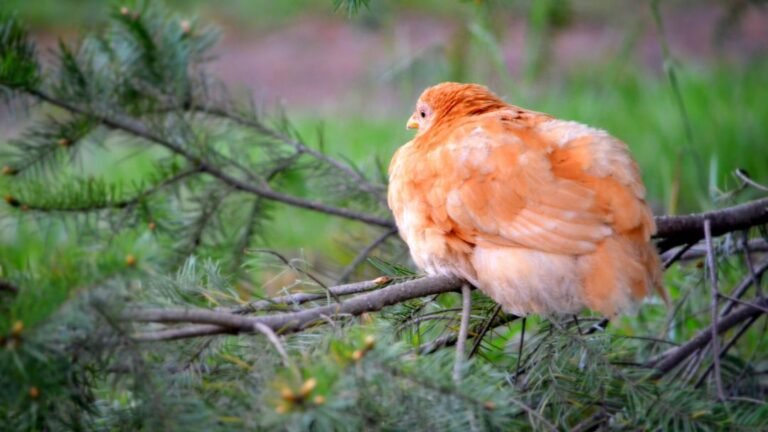Maintaining the right temperature in the chicken coop is very important. Especially in cold weather, chicks require some kind of heating source. A heat lamp is one of the sources.
But to use a heat lamp, you need to know certain things like the heat schedule, safety precautions, and light placement. In this article, I will cover everything about heat lamps. So, without wasting time, let’s get started.
The right heat lamp temperature for your chickens
First, mother chickens do not need extra heat to keep themselves warm and dry. They have an internal temperature of 105 to 107 degrees Fahrenheit. But chicks need an external source of heat. It can be a mother chicken or a heat lamp.
The temperature of the heat lamp should be changed depending on the age of the chicks and the weather. A seven-year-old chick needs 95 degrees F° to survive. For a chick of two weeks, it’s 90 degrees F°. A colder or higher temperature than that can kill the chick. So, after every week, the temperature of the heat lamp needs to be reduced by 5 degrees. To make a comfortable environment, you must adjust heat lamp temperatures consistently according to the circumstances.

For a small henhouse, a 100w bulb will do the job. But, in the cozy winter season, you may need a more powerful bulb to keep your chicken coop warm. Most people use 250w bulbs. But it’s risky sometimes, as the bulb can get super-hot.
What is the perfect chicken coop heat lamp schedule?
There is no exact time to turn your heat lamp on or off. Depending on the condition of the weather, your heat lamp schedule changes. In the harsh winter season, chicks need intensive care to survive. You must keep the heat lamp on 24/7. Constantly monitor the environment of the coop to maintain the right temperature in the hen house.
On a relatively warmer day, you need to turn off the heat lamp as the sun starts to expose heat. Excessive heat can also harm your chickens. Install a thermometer to understand the right temperature. Usually, in the summer season, there is no need to use a heat lamp. But during rainy weather or winter season, the temperature may fall drastically. So, the appropriate time to turn on the heat lamp is after sunset. Also, turn it off when the sun rises, and the weather starts to get warmer to avoid excessive heat.
What is the appropriate place to put a heat lamp in the chicken coop?
Placement is a significant factor when it comes to a heat lamp. The proper placement ensures a great and safe environment for the chicken. If your heat lamps are too close to the chickens, it creates unbearable heat. So, the chickens move away from the lamp. The ceiling or sidewall of the chicken coop can be a great place to set up a heat lamp. But ensure to set the heat lamp at least 18 to 20 inches above the birds if it’s a colder area.
For a warmer area, place the heat lamp at least 24 to 27 inches above the birds. Always try to use a 100w bulb as it is enough for the chickens. Chickens can produce a significant amount of heat to keep each other warm. If you set up a thermometer to monitor the coop, you will find that a suitable temperature is maintained without the heat lamp. So, a higher power bulb will only make the environment worse.
Safety precautions for a heat lamp
A heat lamp can be hazardous in some situations. Every year a lot of burning cases occur due to heat lamp accidents. A heat lamp can ignite dry straw and cardboard easily. Even from a far distance, it can affect any dry components. So, avoid the typical 75w or 100w bulb to heat the chicken coop.
Try to use ceramic heating bulbs. They can produce radiant heat in the coop to warm the area. It’s a great choice to avoid accidents. In addition, the placement of the heat lamp should be perfect. Here are some extra tips to prevent heat lamp accidents-
- Place your heat lamp in a robust place to avoid knocks over.
- Keep the lamp away from burnable things like dry straw, wood, and cardboard.
- Make sure to use high-quality wire to avoid any short- circuits.
- Use good quality light fixtures.
- Make sure you use the right light fixture for the right powered bulb.
- Brush the light fixtures and cable regularly to clean any dust and spider webs.
- Make sure to place the heat lamp away from combustible fuels.
Frequently Asked Questions (FAQs)
Conclusion
That’s a wrap for today. I hope my article gave you the correct information about a chicken coop heat lamp schedule.
Nourishing your chickens is not an easy job. In addition, during winter temperatures, fall is a hard thing to deal with. So, by knowing about the placement, safety precautions, and temperature of the heat lamp, you can now nourish them perfectly.


